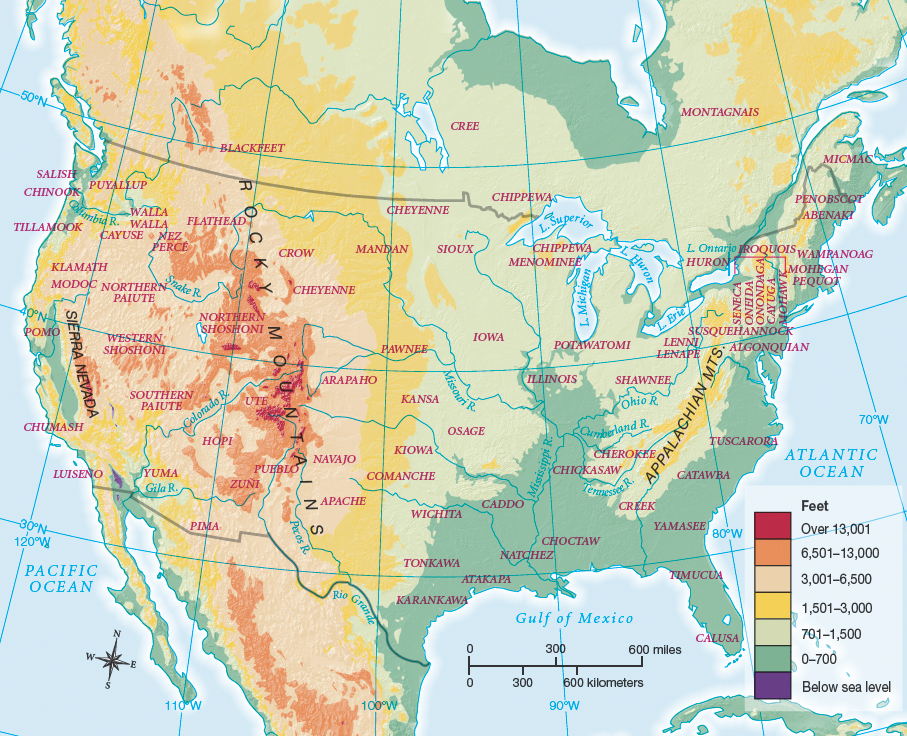Eastern and Great Plains Peoples
Printed Page 18 Chapter Chronology
Eastern and Great Plains Peoples. About one-third of native North Americans inhabited the enormous Woodland region east of the Mississippi River; their population density approximated the average for North America as a whole. Eastern Woodland peoples clustered into three broad linguistic and cultural groups: Algonquian, Iroquoian, and Muskogean.
Algonquian tribes inhabited the Atlantic seaboard, the Great Lakes region, and much of the upper Midwest (Map 1.3). The relatively mild climate along the Atlantic permitted the coastal Algonquians to grow corn and other crops as well as to hunt and fish. Around the Great Lakes and in northern New England, however, cool summers and severe winters made agriculture impractical. Instead, the Abenaki, Penobscot, Chippewa, and other tribes concentrated on hunting and fishing, using canoes both for transportation and for gathering wild rice.

Inland from the Algonquian region, Iroquoian tribes occupied territories centered in Pennsylvania and upstate New York, as well as the hilly upland regions of the Carolinas and Georgia. Three features distinguished Iroquoian tribes from their neighbors. First, their success in cultivating corn and other crops allowed them to build permanent settlements, usually consisting of several longhouses housing five to ten families. Second, Iroquoian societies adhered to matrilineal rules of descent. Property of all sorts belonged to women. Women headed family clans and even selected the chiefs (normally men) who governed the tribes. Third, for purposes of war and diplomacy, an Iroquoian confederation—including the Seneca, Onondaga, Mohawk, Oneida, and Cayuga tribes—formed the League of Five Nations, which remained powerful well into the eighteenth century.
Muskogean peoples spread throughout the woodlands of the Southeast, south of the Ohio River and east of the Mississippi. Including the Creek, Choctaw, Chickasaw, and Natchez tribes, Muskogeans inhabited a bountiful natural environment that provided abundant food from hunting, gathering, and agriculture. Remnants of the earlier Mississippian culture still existed in Muskogean religion. The Natchez, for example, worshipped the sun and built temple mounds modeled after those of their Mississippian ancestors, including Cahokia.
Great Plains peoples accounted for about one out of seven native North Americans. Inhabiting the huge region west of the Eastern Woodland people and east of the Rocky Mountains, many tribes had migrated to the Great Plains within the century or two before the 1490s, forced westward by Iroquoian and Algonquian tribes. Some Great Plains tribes—especially the Mandan and Pawnee—farmed successfully, growing both corn and sunflowers. But the Teton Sioux, Blackfeet, Comanche, Cheyenne, and Crow on the northern plains and the Apache and other nomadic tribes on the southern plains depended on buffalo (American bison) for their subsistence.